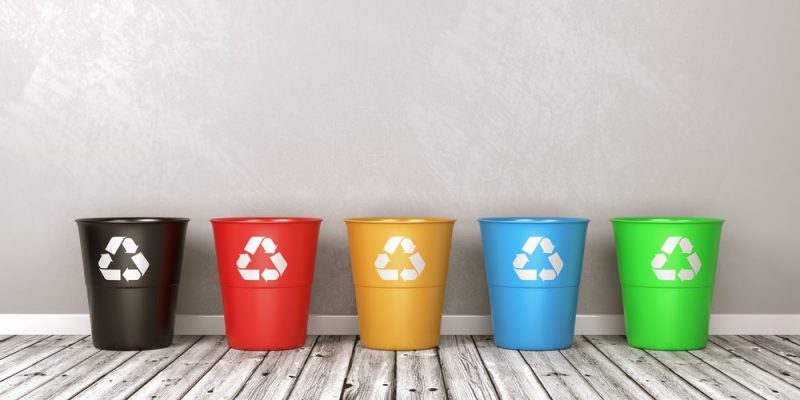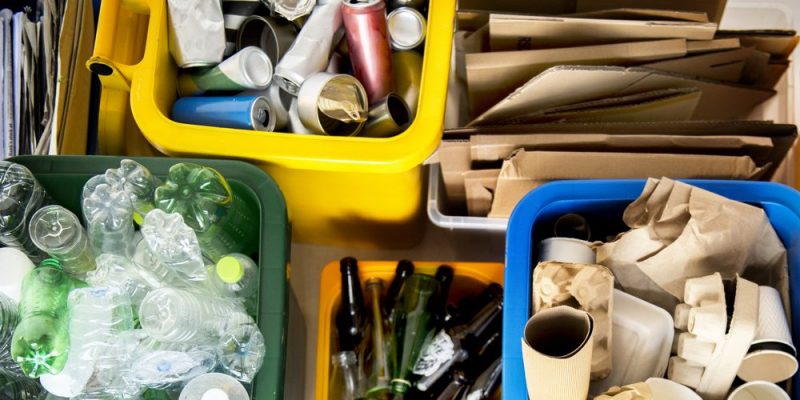We explain what recycling is and how important it is to carry out this action. Also, the types of recycling and the 3R standard.

What is recycling?
It is understood by recycling the action of converting waste materials into raw materials or other products in order to extend its useful life and combat the accumulation of waste in the world. Recycling reinserts waste material from numerous industrial, business or everyday consumption activities into the production chain, allowing it to be reused and reducing the need to acquire or produce new materials.
Not all existing materials are recyclable but a good number of them do, such as cardboard, glass, aluminum, paper and certain types of plastics, which can be subjected to various reuse processes and restart their useful cycle. In other cases, however, they cannot be given the same use, but they can be given a different use in processes of construction, decoration, obtaining energy, etc.
This is the case with organic waste (food scraps, liquid garbage, etc.), which are not recyclable, but luckily There are biodegradation processes that carry out an equivalent natural activity and can be used for composting or fertilizer manufacturing.
Recycling is a minority activity in the face of the enormous manufacturing capacities for new materials that are put into operation daily in our post-industrial world. It is often much cheaper to produce something new than to recycle something old, which makes this very necessary activity unprofitable in ecological terms.
See also: Exploitation of natural resources
Importance of recycling

Recycling is a way to combat pollution of soils and seas, since the prolonged presence of garbage in them leads to unpredictable changes in their biotic and ecological processes. In order to build an industrial life model that is sustainable over time, that is, one that does not lead headlong to disease, extinction and climate change, recycling is imposed as a human necessity.
On the other hand, recycling certain elements can be a moderately lucrative activity once it is achieved as part of everyday culture. Recycled elements are purchased by companies that take advantage of them to reduce their acquisition of raw materials, so it is a win-win scenario.
Types of recycling
There are various forms of recycling, depending on the nature of the material in question, such as:
- Paper recycling Large quantities of waste paper can be soaked to make cellulose pulp and make inferior quality paper that can be reused.
- Metal recycling Everyday metal products made from aluminum, copper and other soft metals can be melted down and reused to make new products, reducing the need to purchase raw materials.
- Recycling of plastic containers Tetra-bricks and other entire plastic containers can be reused, once they have been properly sanitized and prepared to contain food or juices again.
- Oil recycling. Cooking oil is a powerful water contaminant, which can be collected and used through filtering and purification processes, as a machinery lubricant.
- Composting Organic waste, such as leftover decaying food, can become fertilizer for planting or even inputs for obtaining biofuels.
Reduce, reuse and recycle

A bio-friendly culture pattern that leads to a sustainable society is known as the “3R norm.” To do this, three key concepts must be implemented in our daily lives, which are:
- Reduce. Consume only what is necessary, avoid the culture of waste that not only generates more garbage than is strictly necessary, but also consumes resources that are expensive to obtain in environmental terms, such as electricity or drinking water. Small everyday actions can guarantee significant savings in the planet's natural resources, many of which are neither renewable nor can be cleanly processed.
- Re-use The use of old materials and products for new purposes, before immediately changing them for others. This is how the culture of consumerism and irresponsibility is combated, with small gestures such as writing the pages on both sides, refilling glass bottles, etc.
- Recycle Give new life to waste materials, such as packaging, papers, aluminum cans, etc., reincorporating them into the production chain. This requires an effort to separate recyclable garbage from biodegradable garbage, as well as a public organization that distinguishes places to deposit them separately.





